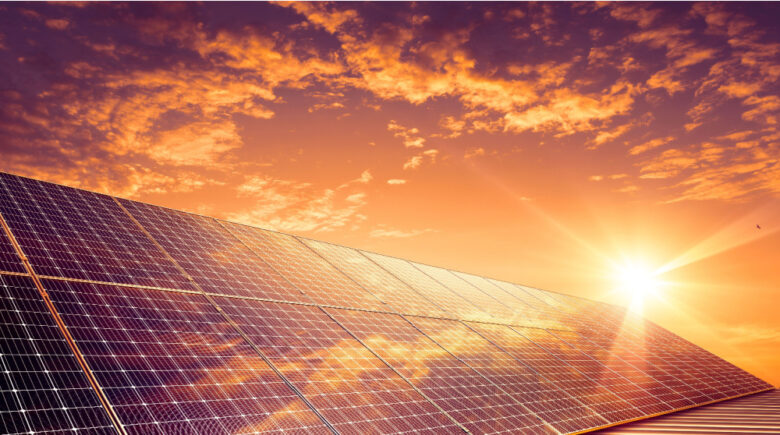The U.S. Energy Information Administration (EIA) projects that in 2025—and likely beyond—solar power will constitute the lion’s share of newly added electricity generation capacity in the United States. This surge is driven by generous government incentives, ongoing improvements in efficiency and rapidly falling costs. As a result, both commercial and residential solar installations are set to expand substantially, with commercial projects poised for especially strong growth thanks to tax credits introduced by the Inflation Reduction Act.
In this article, we’ll explore the forces propelling solar’s expansion, examine potential obstacles on the horizon, and consider how solar and wind together can meet rising demand while cutting pollution.
I. Weighing Solar’s Advantages and Drawbacks
As the U.S. commits to a cleaner energy future, solar power has emerged as a key solution for reducing carbon emissions, lowering electricity bills, and enhancing energy security. By 2025, over five million residential solar systems are already installed nationwide—and that figure continues to climb. Yet, despite its many benefits, solar energy also presents some challenges.
Advantages
- Sustainable and Renewable: Solar energy relies on an endless resource—the sun.
- Environmentally Friendly: It produces zero greenhouse-gas emissions during operation.
- Lower Electricity Costs: Homeowners and businesses can slash utility bills.
- Low Maintenance: Modern panels require minimal upkeep over their 25-plus-year lifespan.
- Incentive Eligibility: Federal and state programs help offset installation expenses.
- Technological Progress: Advances have made panels more efficient and affordable.
- Property Value Increase: Solar-equipped homes often command higher resale prices.
- Energy Independence: On-site generation reduces reliance on the grid.
Disadvantages
- High Upfront Cost: Installations still require a significant initial investment.
- Intermittency: Solar output fluctuates with weather and daylight hours.
- Site Constraints: Roof angle, shading and regional climate affect performance.
- Lifecycle Impacts: Manufacturing and disposal of panels have environmental footprints.
- Policy Sensitivity: Incentives and net-metering rules vary by state and can change.
- Insurance and Tax Effects: Property taxes and homeowners’ premiums may rise.
II. Key Trends and Forecasts for 2025 and Beyond
1. Solar Dominates New Capacity
The EIA forecasts that solar will overtake all other sources as the primary driver of new U.S. generation capacity in 2025.
2. Rapid Growth in Total Output
By year’s end, cumulative solar generation is expected to exceed 286 billion kilowatt-hours, marking dramatic growth from just a few years ago.
3. Commercial and Residential Expansion
Both sectors will see continued expansion, but commercial installations—boosted by generous tax credits under the Inflation Reduction Act—are poised for the largest uptick.
4. Declining Costs, Rising Efficiency
Average installation costs have fallen to roughly $3.03 per watt, while emerging technologies like TOPCon modules push panel efficiency ever higher.
5. Regional Leadership
California and Texas will lead in new utility-scale solar additions, followed by significant increases in Arizona, Indiana, Michigan, New York and Florida.
6. Battery Storage Integration
Pairing solar with battery systems is becoming standard, enhancing grid stability and giving customers greater control over their energy use.
III. Forces Driving Solar’s Surge
- Government Incentives: The Inflation Reduction Act’s investment and production tax credits continue to make solar projects financially compelling.
- Rising Electricity Rates: As grid prices climb, solar becomes an increasingly attractive hedge against utility bills.
- Technological Innovations: Breakthroughs in panel design, balance-of-system components and installation techniques lower costs and boost energy yields.
- Environmental Awareness: Growing concern over climate change and corporate sustainability goals drives both businesses and homeowners toward clean power.
IV. Challenges on the Horizon
- Policy Uncertainty: Potential rollbacks or expirations of federal incentives could slow adoption rates.
- Supply Chain Vulnerabilities: Although domestic manufacturing is expanding, global shortages or trade disruptions may cause price spikes.
- Consumer Trust: Reports of aggressive sales tactics in the solar industry have the potential to damage public confidence.
V. Solar and Wind: A Clean-Energy Partnership
The U.S. power sector—responsible for about 25 percent of the country’s heat-trapping emissions—must meet growing electricity demand while slashing pollution. Solar and wind together offer complementary generation profiles: solar shines during midday peaks, while wind often blows at night and across seasons. Their combined growth is critical to displacing fossil fuels, creating jobs (149,000 new clean-energy positions in 2023 alone), and steering America toward a sustainable energy future.
VI. Conclusion
With solar deployments growing at roughly 26 percent annually since 2014, harnessing sunlight is no longer a fringe endeavor—it’s central to America’s clean-energy transformation. In 2025, solar power stands poised not only to drive the majority of new electricity capacity but also to reshape our energy landscape, reduce emissions and empower consumers. As policies evolve and technologies advance, the sun’s influence on U.S. power generation will only continue to brighten.



